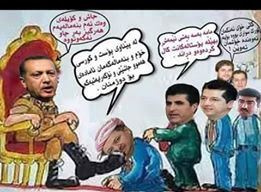After Acid Attacks, Thousands Of Iranian Women Take To The Streets.
At least four women in Iran’s cultural capital were attacked with acid this week. Althoughpolice have arrested four men in connection to the acid-throwing, about 2,000 protesters marched on the department of justice in Ifsahan to decry the crime, which is relatively rare there. This massive outcry reflects on a burgeoning, social media-driven movement for increased social freedoms in the theocratic country.
One 28-year-old woman was attacked while driving her car with her window rolled down. She suddenly lost control while driving and then stumbled out of the door screaming, “I’m burned, I’m burned.” She then stripped off her head scarf – the covering is mandated by law for women in Iran along with loose-fitting clothing over the torso, arms, and legs.
“The level of acid used was so much that all her clothes were in the processes of melting and I saw the acid create white spots on the asphalt,” one witness told the official Iranian news agency, IRNA.
The acid that is thrown on people – mostly women – is often highly corrosive and meant to disfigure and maim them. Acid-throwing occurs around the world from South Asia toSouth America and is on the rise in Italy and in the United Kingdom.
Acid-throwing is unusual in Iran and the recent attacks have led many to believe that this recent spate of attacks are a natural outgrowth of a new law protecting, as the New York Times put it, “those citizens who feel compelled to correct women and men who in their view do not adhere to Iran’s strict social laws,” which was enacted by the country’s parliament on Sunday. Though, to be sure, the law affords private citizens with the right to hand out verbal or written comments on social codes — not partake in vigilante violence.
“Such an act under any pretext is reprehensible,” Hojatoleslam Mohammad Taghi Rahbar, a cleric, told the semi-official ISNA news agency. “Even if a woman goes out into the street in the worst way, no one has the right to do such a thing.”
The country’s “dress code” was enacted after the Islamic Revolution in 1979, when images of women in long black cloaks and face coverings came to dominate images of the country. While women are still legally obligated to cover their heads and bodies, the colors and shapes of their attire is less uniform these days. The street fashion blog the Tehran Times features images of stylish Iranian women in rolled or torn skinny jeans and patterned scarves – plus the ever-present long coat, or manteau. Though incredibly modern, their looks are modest enough to not fall afoul of Iran’s literal “fashion police” – who can no longer arrest women because of their attire.
Iran’s “modesty project” was scaled back by President Hasan Rouhani last year. But even before that it was rare for women to be jailed or lashed for breaking social codes — although those punishments were on the books.
As Jason Rezaian explained in a 2012 article for the Boston Globe many believe that the laws might be founded in notions of the sort of attire sanctioned by Islam, but that in Iran, clothing has become a way to map geopolitics out across women’s bodies.
“[A]uthorities have made the case this year that un-Islamic dress is a matter of national security and a symptom of longtime Western meddling in Iranian affairs. Officials routinely cite the improper wearing of hijab as the cause of a variety of social maladies, from women who marry later in life to those who go into prostitution. The root problem is often blamed on ‘foreign agents.’’’Tehran’s police chief, Ahmad-Reza Radan, this month called support for improper hijab ‘part of the enemy’s soft war against us.’”
Masih Alinejad didn’t think she was fighting back against the politicization of women’s bodies when she posted a couple photos of herself without a headscarf to her Facebook page, but the images, to her surprise, went viral. The 37-year-old journalist soon realized that there was a hunger amongst women to be seen in a way that may not pass muster with Iranian authorities – and to embrace the freedom to dress as they pleased, if only in secret.
Alinejad asked women to send in photos of themselves to her project “My Stealthy Freedom” which has a following of nearly 700,000 on Facebook.
CREDIT: FACEBOOK
“These are the women who know they are putting themselves in a dangerous situation, who know how much it can get them in trouble, but this is the only way they can send a message to the world or their government, because they just want to be heard,” she told ABC News earlier this year. “I wanted to give them a voice.”
Many of the photos feature women with their hair billowing in the wind, but a scarf is often pictured in their hands or around their necks – a sign that even while often publically breaking the law, they can’t disregard it entirely.
Some women also posted captions alongside their photos, including one who wrote, “Freedom is pleasant; but why should it be stealthy?” This is a point Alinejad, who has been slandered by politicians for her efforts, acknowledges. “Freedom that is stealth cannot be called freedom at all,” she wrote. Still, she hopes her project will help make the headscarf a choice – not a law – and show women who would prefer not to wear it that they aren’t alone.
Haleh Anvari, an Iranian artist and writer, isn’t so keen on using how women in her country dress as a shorthand for social norms. “Showing the world our designer handbags or bra straps does not signify what we have achieved or strive for,” she wrote in an op-ed for the New York Times this summer. “Maybe it’s time for the world to stop measuring Iran through the bodies of its women. Maybe we should be careful that, in an effort to repossess our image from the grasp of a strict ideology, we don’t slip into a mindless production of new stereotypes.”
Still, the acid attacks in Ifsahan have forced women to think seriously about the what they wear – and how their clothing is perceived by others.
“I’m not afraid,” a 30-year-old gym instructor from Isfahan, the city where the acid attacks took place earlier this week told Reuters. “I won’t change how I dress because we must fight against this strain of thought.”



















.jpg)










.jpeg)
































Inga kommentarer:
Skicka en kommentar